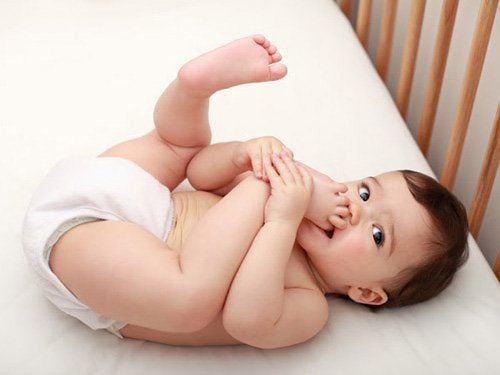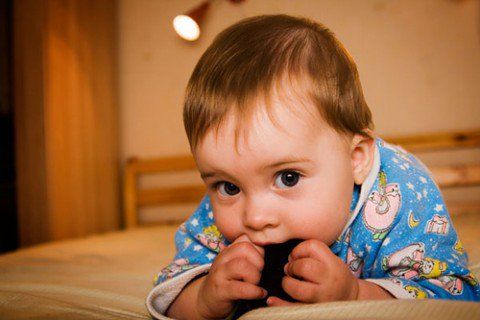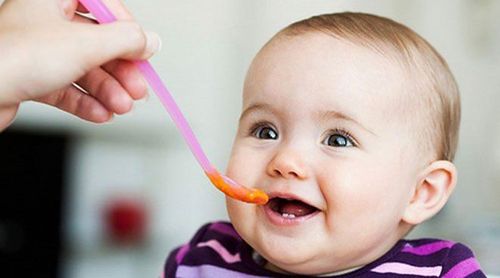This is an automatically translated article.
Eight-month-old babies continue to develop physically, physically, and cognitively and emotionally. So what can an 8-month-old baby do, can an 8-month-old baby crawl or not?
1. How much does an 8 month old baby weigh?
According to the World Health Organization (WHO), the weight and height of an 8-month-old baby need to reach from 6.3 - 10.2 kg and 64 - 73.5 cm (for girls) and 6, respectively. 9 - 10.7kg and 66.2 - 75cm (for boys).
2. How does an 8-month-old baby develop?
Parents need to find out what the 8-month-old baby knows to do to support the full development of skills from motor to cognitive and emotional. However, do not be too worried when children have not developed according to important milestones because each child has a unique growth rate. If the child has not yet achieved a certain skill, do not be too hasty, because the child may be focusing on developing other skills until mastery and perfection is achieved.
2.1 Level of motor development of 8-month-old babies During the first 3 years of life, young children have a remarkable development in both cognitive and motor skills, from gross motor (the ability to control and coordinate large muscle groups) to fine motor (the ability to control and coordinate fingers and hands).
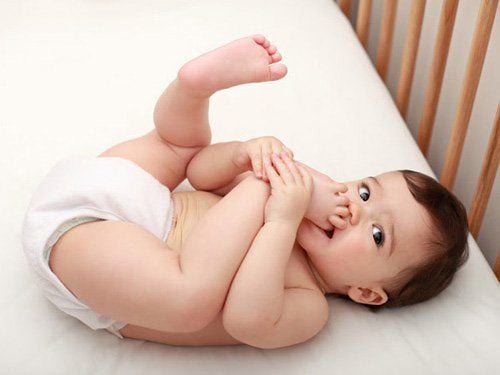
Các kỹ năng vận động của trẻ phát triển vượt bậc khi bé được 8 tháng tuổi
For gross motor, an 8-month-old baby can:
sit up on his own, his head may be slightly forward but he can already use his hands to support. Sucking your feet or using your feet to reach for nearby objects or toys. Children often move both arms and legs continuously when lying on their back and quickly turn over to lie on their stomach to observe and look around. Then, the child turns himself on his back and repeats this movement. One of the important gross motor skills that an 8-month-old can do is crawling. Babies can already crawl very well to move to where they need to go or to crawl. The child can't sit on his own yet and needs the support of a parent. Reach out to reach for objects or toys. The child stands on his lap when holding him in a standing position. For fine motor, 8-month-old babies can:
Smoothly coordinate their fingers to grasp objects, toys or pick up toys themselves. Put all the objects that the child picks up in his mouth to taste and lick. Children hold and shake rattles for longer periods of time. 2.2 Levels of cognitive development of 8-month-olds Cognitively, the brains of 8-month-olds continue to develop at an astonishing rate. Parents will see their children develop cognitively with the following specific levels:
Children react when they hear their name or any sound.
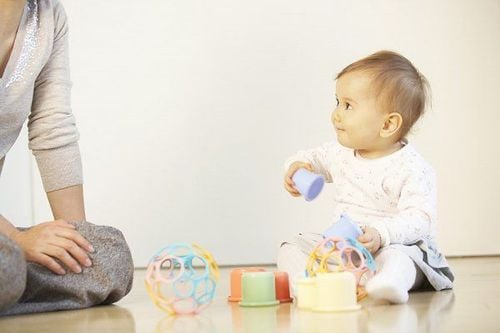
Nhận thức của trẻ 8 tháng tuổi phát triển với tốc độ đáng kinh ngạc
Children's visual development is equivalent to that of adults, helping children recognize the existence of people and objects around them. Children still love to play "peek-peek" or "hide and seek, hide objects". Understand cause-and-effect, for example, by giving your child a toy with a button, your child will know how to press a button to make the toy make a sound or light. In terms of language, 8-month-old babies like to observe and imitate the behavior, tone, and language of adults. The baby is constantly babbling and making sounds like “papa” or “mama”. Can hear and understand adults' words when asking children to follow parental actions such as clapping. Understand and stop when you hear the word “no”. Use body language to communicate such as reaching out for a hug, shaking your head. Children understand reflections in mirrors. 2.3 Level of emotional development of 8-month-old children At this stage, 8-month-old children have expressed their emotions more clearly, parents can see:
Children are afraid and appear shy and apprehensive. when meeting strangers, excited and happy when meeting acquaintances, especially parents. Children express strong feelings about their likes and dislikes, for example clapping their hands when happy or excited and crying when a toy is not available or stolen.

Trẻ 8 tháng tuổi đã biết bày tỏ cảm xúc rõ rệt với những điều mình thích hay không thích
8 months old baby can begin to wave goodbye or kiss. Children imitate and repeat the feelings of others. Babies may also cry when they see another baby crying. 8-month-old babies continue to thrive both physically and mentally. The senses such as hearing, seeing, and touching help children gradually improve their perception and develop communication and emotional skills. If they notice unusual signs in their child, parents should take their child to a reputable medical facility for advice and examination.
For children to be healthy and develop well, it is necessary to have a nutritious diet in terms of quantity and quality balance. If children are not provided with adequate and balanced nutrients, it will lead to diseases of excess or lack of nutrients, which adversely affect the comprehensive development of children in terms of physical, mental and motor skills.
Children who do not eat properly are at risk of micro-mineral deficiency causing anorexia, growth retardation, malabsorption,... If they notice the above signs, parents should supplement their children with products. The supplement contains lysine, essential micro-minerals and vitamins such as zinc, chromium, selenium, and B vitamins to help fully meet the nutritional needs of children. At the same time, these essential vitamins also support digestion, enhance nutrient absorption, help improve anorexia, and help children eat well.
Parents can learn more:
Signs of zinc deficiency in children
Micronutrient deficiency and failure to gain weight in children
Please regularly visit Vinmec.com website and update useful information to take care of your child. Take care of the baby and the whole family.




